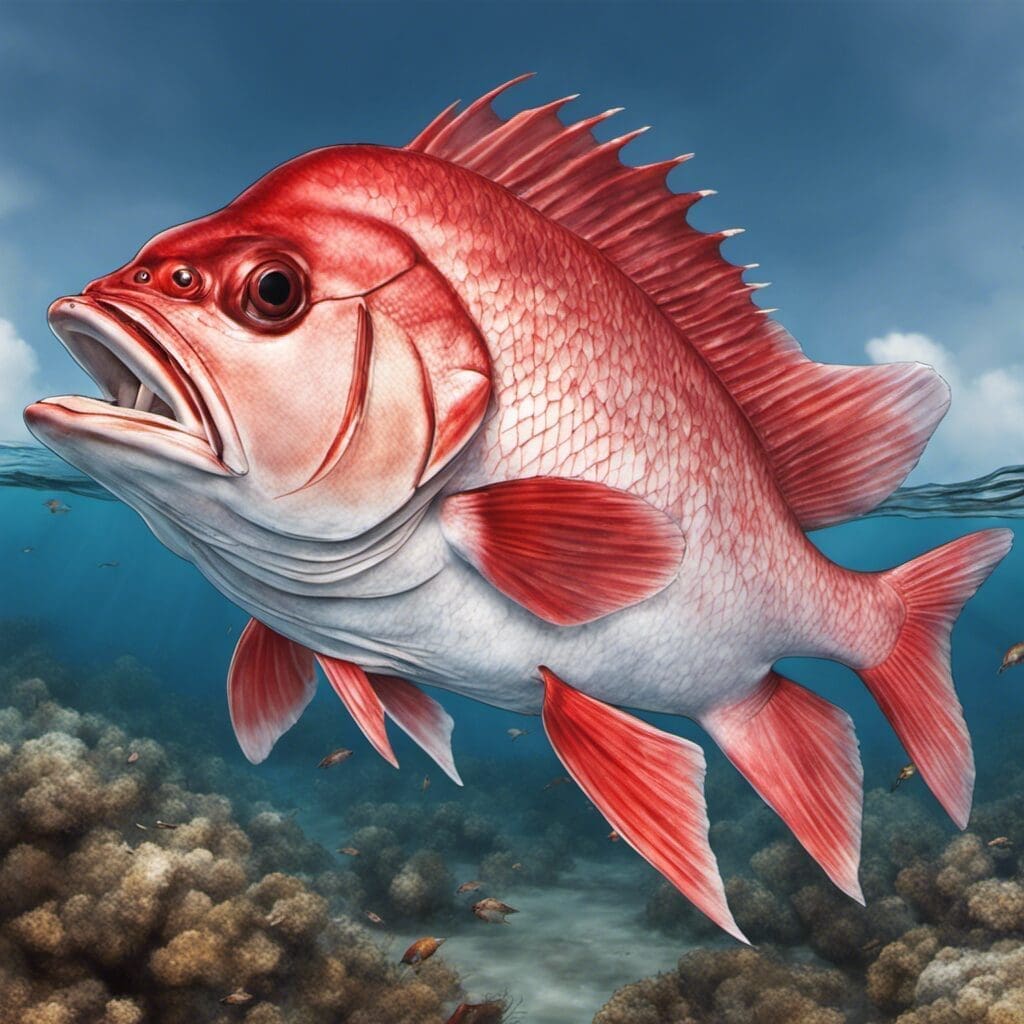Introduction
The Short-Tail Red Snapper, also known as Ehu (Etelinei Sebastes), is a colorful species of marine fish known for its vibrant red color and shortened tail. This fish is part of the Lutjanidae family, encompassing snapper fish, which are among the most diverse families of marine fish.
Conservation Status
While the conservation status of the Short-Tail Red Snapper is currently ungraded by major conservation authorities, local authorities and fishers play an important role in monitoring and managing their mature populations. These efforts involve sustainable fishing practices and regulations pertaining to allowable catch limits, aiming to maintain balanced and healthy populations.
Statistics
| Average | Range | |
|---|---|---|
| Length | 40 cm | 30 – 70 cm |
| Weight | 1.5 kg | 1 – 4 kg |
| Lifespan | 12 years | 10 - 16 years |
Distribution
Ehu can be found throughout the Pacific Ocean, specifically around Hawaii, Taiwan, and other parts of Southeast Asia. These fishes have a sedentary lifestyle, exhibiting limited migration patterns unless driven by breeding season or scarcity of food.
Habitats
Short-Tail Red Snappers inhabit tropical and subtropical waters. They are found at depths between 90 and 400 meters, preferring warmer temperate ranges of 20 to 28 degrees Celsius.
When and Where to See
Short-Tail Red Snappers can be spotted throughout the year, edging towards late evening till dawn due to their tendency to feed during the night.
Best Fishing Locations
Popular spots for catching Ehu include:
- Kaikoura, New Zealand
- Konishi Shima, Japan
- Lanai City, Hawaii, USA
- Port Arthur, Australia
- Andaman and Nicobar Islands, India
How to Catch
The preferred bait for catching Ehu includes squid, mackerel, and crab. Fishing techniques cover a range from deep sea bottom fishing to jigging. The best time to fish is late evening until dawn, due to the species’ night-active behavior.
Identification Guide
Ehu can be distinguished by their bright red or pink coloration, short tail, and streamlined shape. They have a distinct lateral line across the body, and their lower jaws are slightly set back compared to the upper jaw.
Culinary
Ehu has a mild, sweet flavor and a firm, flaky texture when cooked, making it a favorite among seafood enthusiasts. Its nutritional profile features high protein content, omega-3 fatty acids, vitamins D, B12, and selenium.
Additional Information
Ehu are carnivorous, feeding on smaller fish, shrimp, and cephalopods. They are a solitary species and maintain their territory fiercely. Predators include larger fish and marine mammals. No substantial human-induced threats are recorded, but overfishing may pose a future threat.
Despite its common occurrence in Asian culinary culture, there are no significant cultural or historical anecdotes associated with the Ehu. However, it does hold economic significance for local fisheries.
References and Further Reading
- FishBase. (2021). Etelinei Sebastes Summary Page.
- IUCN. (2021). The International Union for Conservation of Nature.
- FAO. (2021). Food and Agriculture Organization of the United Nations.

